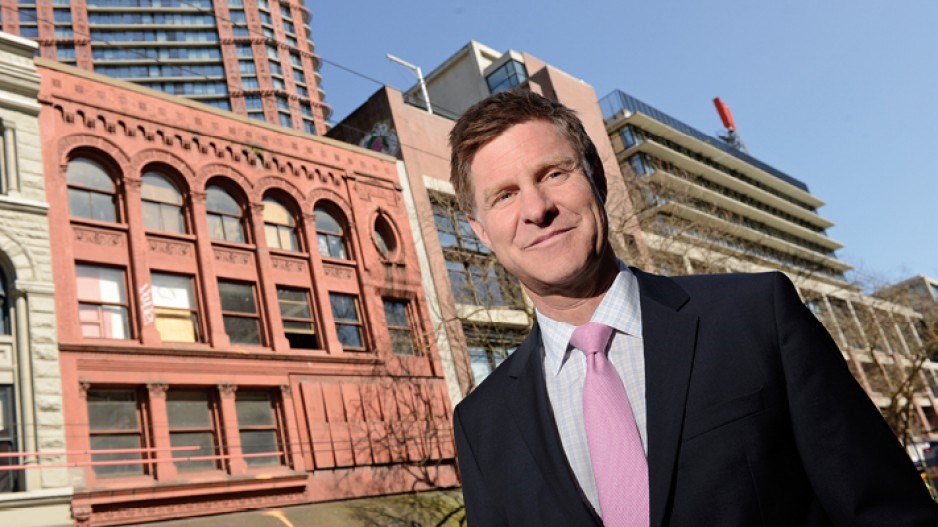Developers who have restored historic Gastown buildings say City of Vancouver reluctance to honour past commitments has stalled area renewal.
Century Group announced April 1 that it plans to build the first new office building in Gastown in decades – one that will keep and restore a historic facade in front of a new structure.
The Delta-based developer is not relying on any city incentives for its 39,500-square-foot project, which includes four floors of office space and two retail units on the ground floor, marketer and Colliers International associate vice-president Stephen Moscovich told Business in Vancouver.
“That’s probably smarter than to rely on city incentives,” said Salient Group president Robert Fung, who has extensive experience rehabilitating Gastown buildings and restoring facades.
Fung told BIV that he feels betrayed by the city for not allowing him to sell bonus density that he accumulated on a handful of projects that have helped rehabilitate the neighbourhood, which was a rundown, largely vacant and crime-ridden no-go zone.
Bonus density is square footage and can be sold to other developers allows them to develop buildings that are taller or bigger than the city would otherwise authorize.
Fung’s many projects were built and financed on the understanding that the city would provide him with bonus density to recoup costs associated with restoring 100-plus-year-old buildings to a level considered new for insurance purposes.
In 2007, the city slapped a moratorium on granting new bonus density for heritage upgrades not yet in the planning process. It then stopped awarding bonus density for those projects in 2009.
That left developers such as Fung, Reliance Properties CEO Jon Stovell and Westbank CEO Ian Gillespie with a total of about 1.2 million square feet of density, said Brian Jackson, the city’s general manager of planning.
Because the city granted Fung more than 200,000 square feet of bonus density and has been slow to allow him to monetize it, Fung has had to finance carrying costs on debt that he would otherwise have been able to pay.
“City incentives have been hollow,” Fung said. “It hasn’t been an incentive that’s been honoured in a way consistent with the intent of the program.”
What’s worse for Fung is that he believes that the city is now acting to devalue his density’s unrealized value.
The city originally capped the value of Fung’s density at $65 per square foot, and Fung’s understanding was that the city would encourage future developers to pay Fung that amount for density as part of their projects’ community amenity contributions (CAC).
Instead, he said the city has told many developers to pay for daycare spaces, affordable housing and other amenities as their CAC.
The city has now committed to buying and cancelling $4.8 million worth of bonus density in a Dutch auction whereby developers compete against each other to sell their density. In a Dutch auction, the lowest bid wins.
Fung would have preferred that the city simply pay what was previously expected to be $65 per square foot.
Bids had to be received by April 1, and auction winners will likely be known in June.
Jackson said the auction will reduce the amount of available bonus density, which will increase its value.
He added that the city will also “potentially” allow any developer of a commercial CD-1-zoned site across the city to bid to buy the density as part of a CAC. Previously, only developers of CD-1 sites in the West End, downtown and Broadway corridor were allowed to buy density as a CAC. •




